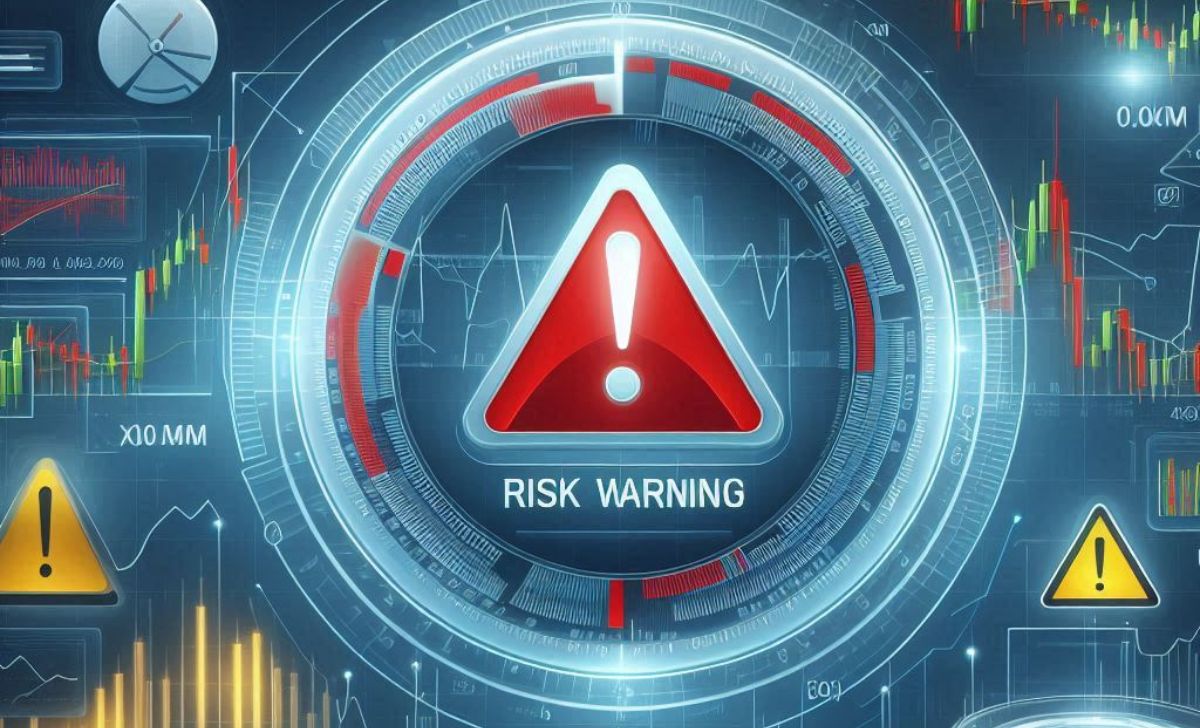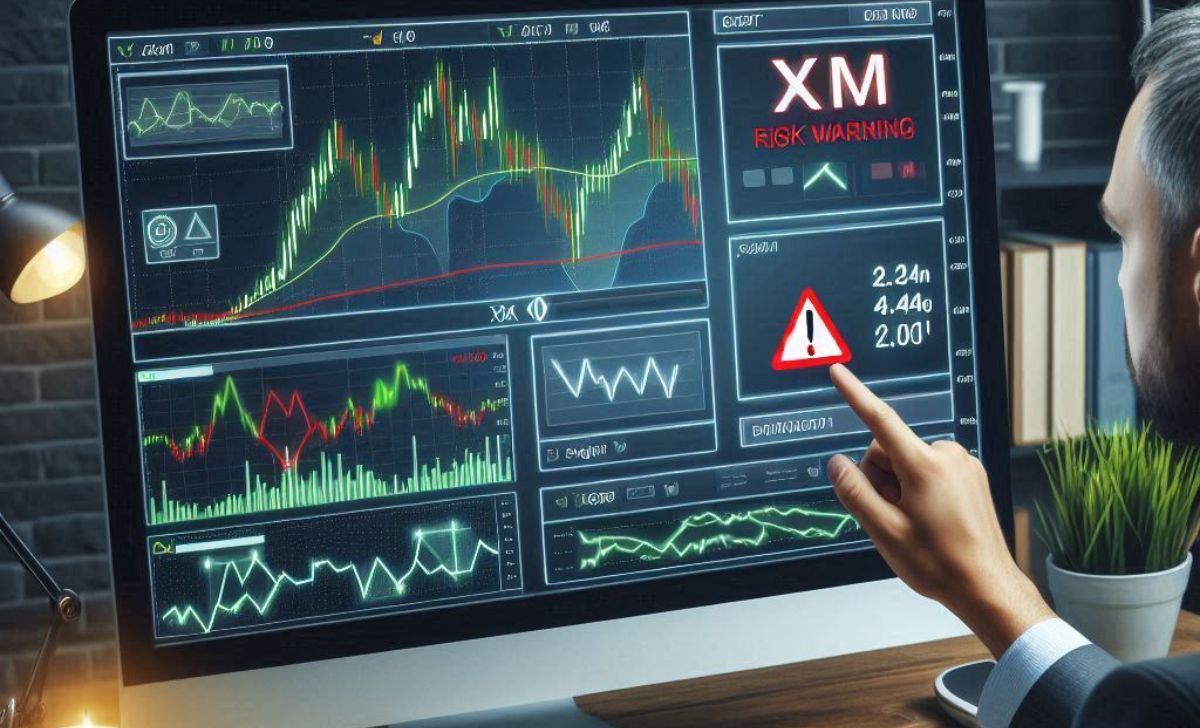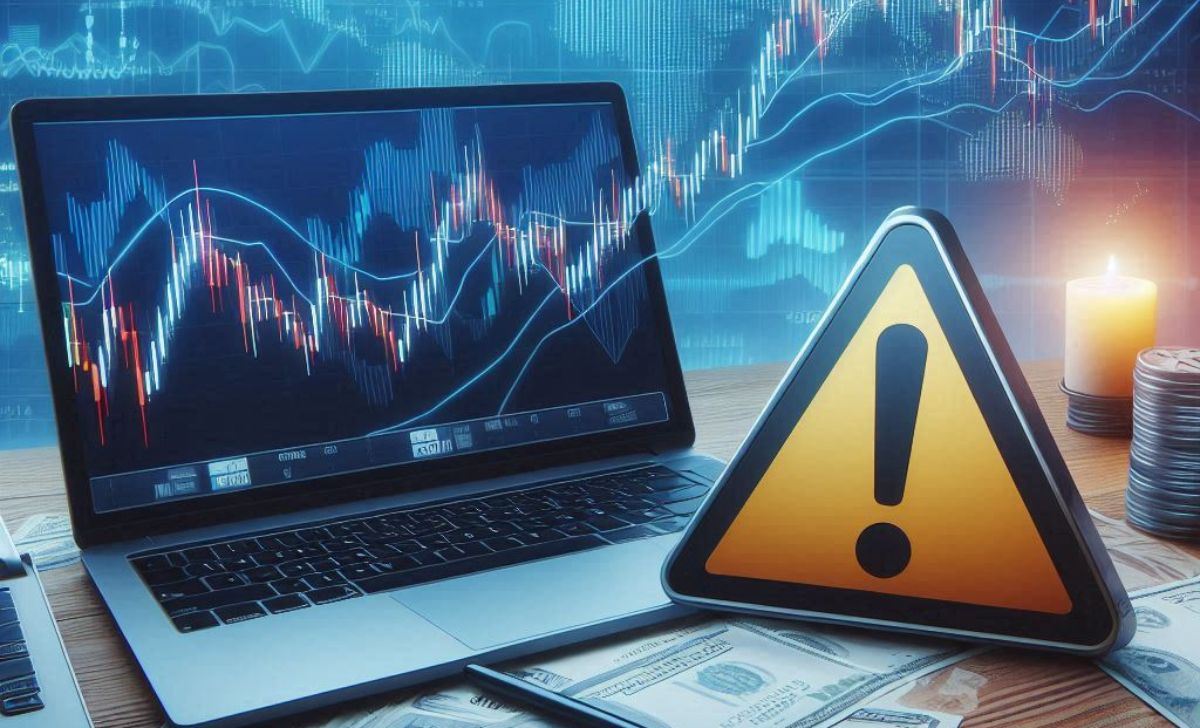Risk Warning XM
Risk Warning XM highlights the inherent risks associated with leveraged trading in forex and CFDs. It serves as a clear reminder that trading financial instruments involves the possibility of significant loss and is not suitable for all investors.
Before you start trading with XM, it’s important to fully understand the potential financial risks involved. The platform provides a detailed risk disclosure to help traders make informed decisions. Let’s explore what the XM risk warning covers and why it matters.
What Is XM’s Risk Warning and Why Does It Matter?

Risk Warning XM is a legally required statement that alerts users to the potential for significant losses when trading forex, CFDs, crypto, indices, and other instruments, and it exists to ensure informed decision-making, especially for retail traders using high leverage or trading volatile assets. Here’s a breakdown of what the risk warning means and who it’s for:
What is a financial risk warning in trading?
A financial risk warning is a standardized legal disclosure that:
-
Informs traders of the potential for capital loss, including the risk of losing more than the initial deposit (except when negative balance protection is in place).
-
Is mandated by financial regulators such as:
-
CySEC (under MiFID II for EU clients)
-
ASIC (Australian clients)
-
FSC Belize (international clients)
-
At XM, this warning applies to all high-risk products, including:
-
Forex and CFDs
-
Cryptocurrencies
-
Commodities, indices, and shares
The warning typically includes data like: 75% of retail investor accounts lose money when trading CFDs with this provider.
Why is risk warning essential for XM users?
It serves both a legal and educational purpose:
-
Ensures that users understand trading is not guaranteed profit and that market volatility can result in rapid financial losses.
-
Reinforces that all trading at XM is self-directed users must evaluate their financial situation before trading.
-
Demonstrates that XM is fully compliant with regulatory standards, protecting its licenses under CySEC, ASIC, and FSC.
For new users, it acts as a final checkpoint before funding an account, encouraging more responsible trading behavior.
Who is most affected by these trading risks?
Beginner retail traders and those with limited experience are most exposed, especially if they:
-
Use high leverage (e.g., 1:500) without understanding margin mechanics
-
Trade volatile assets such as cryptocurrencies or exotic forex pairs
-
Lack a proper risk management strategy, including stop-loss use, capital allocation, and emotional discipline
The risk warning exists to help these traders recognize that while tools like leverage can amplify gains, they also amplify losses, and real-money trading requires preparation.
What Specific Risks Are Disclosed by XM?

XM discloses several specific trading risks, including market volatility and price fluctuations, the amplifying effect of leverage in CFD trading, and the risk of loss exceeding deposits, though this is mitigated through negative balance protection. Below is a breakdown of the key risk categories outlined by XM:
Market volatility and price fluctuations
XM warns that:
-
Prices can change rapidly, especially during:
-
News events (e.g., NFP, interest rate decisions)
-
Illiquid trading sessions (e.g., rollover hours, weekends)
-
-
Sudden movements may result in:
-
Stop-loss orders being triggered at worse-than-expected prices (slippage)
-
Account drawdowns within seconds of entry
-
This type of risk affects all instruments, including forex, commodities, and indices, and reinforces the need for active risk management and monitoring.
Risk of using leverage in CFD trading
Leverage is a core feature of CFD trading, but XM emphasizes its dual-edged impact:
-
Leverage amplifies gains and losses equally.
-
For example:
-
With 1:1000 leverage, a 0.1% price movement against your position can wipe out your entire margin.
-
-
Higher leverage = higher exposure, making it crucial to understand margin requirements, liquidation thresholds, and free margin levels.
XM allows clients to adjust leverage manually and encourages conservative settings for less experienced users.
See more XM trading products:
Risk of loss exceeding deposits (before protection)
In theory, traders can lose more than their account balance, especially during:
-
Flash crashes
-
Unpredictable news events
-
Platform disconnections during open positions
However, XM mitigates this risk through its policy of Negative Balance Protection (NBP), which:
-
Automatically resets negative balances to zero
-
Ensures clients do not owe additional funds, even after extreme market moves
This protection is especially important for retail traders using high leverage, and is consistently highlighted in XM’s legal documentation and product disclosures.
XM’s Legal Disclosures Based on Regulatory Bodies

Yes, XM’s legal disclosures are compliant with regulatory bodies including the EU (MiFID II), ASIC (Australia), and IFSC (Belize), and the broker displays real client loss data as required by law, with dynamic, location-based warnings shown on different regional websites. These disclosures uphold legal transparency and ensure clients in each jurisdiction are adequately informed about trading risks.
Is XM compliant with EU, ASIC, and IFSC risk disclosure rules?
Yes. XM operates under multiple regulatory entities and aligns with their respective disclosure frameworks:
-
EU (CySEC/MiFID II):
-
Requires prominent risk statements, disclosure of loss percentages, and links to legal documents.
-
Applies strict limits on leverage and mandates pre-trade disclosures for CFDs.
-
-
ASIC (Australia):
-
Enforces detailed Product Disclosure Statements (PDS) and clear explanations of risks tied to derivatives and margin trading.
-
Requires prominent display of client warnings on platforms and marketing content.
-
-
IFSC (Belize):
-
Requires disclosures in line with international best practices, though with more flexible leverage.
-
Clients are still shown clear warnings about the nature of leveraged instruments.
-
Across all jurisdictions, XM provides public facing legal documentation and terms of service that reflect each regulator’s demands.
Does XM show real data like % of retail clients losing money?
Yes, especially under EU law. In compliance with MiFID II and ESMA regulations, XM:
-
Displays a real-time statement such as: 75% of retail investor accounts lose money when trading CFDs with this provider.
-
Updates this figure at least quarterly, based on internal analytics and trade outcomes.
-
Shows the loss rate on:
-
Website footers
-
Account registration pages
-
Marketing materials (email, banners, bonus offers)
-
This ensures that clients are aware of statistical risk before engaging in trading, and it discourages unrealistic profit expectations.
Are these warnings dynamic based on location?
Yes. XM uses geolocation tracking to display the appropriate version of its site and legal warnings:
-
EU clients (visiting XM CY) see stricter leverage caps, loss data, and MiFID-specific warnings.
-
Australian users (XM AU) receive content tailored to ASIC’s regulatory language and complaint protocols.
-
International clients (XM Global under IFSC) are shown warnings in line with FSC rules, with slightly different bonus and leverage availability.
Each site maintains a region specific Terms & Conditions and Risk Disclosure Statement, helping XM stay legally compliant across borders.
What Are the Main Trading Risks Users Should Understand?

The main trading risks users should understand when using XM include technical risks like platform delays and slippage, psychological risks such as emotional and revenge trading, and legal or jurisdictional risks that may restrict access to XM’s services in certain countries. Below is a detailed breakdown of each risk type:
Technical risks – platform, execution, slippage
These are operational risks that can impact trade accuracy and timing:
-
Order execution may be delayed due to high market volatility or server congestion.
-
Slippage can occur, especially during:
-
News events
-
Low-liquidity sessions
-
Fast-moving markets
-
-
Internet connection issues or device malfunctions can:
-
Interrupt trades mid-execution
-
Prevent stop-loss or take-profit levels from triggering properly
-
While XM offers reliable infrastructure, traders are responsible for using stable internet connections and maintaining device security.
Psychological risks – emotional trading, revenge trades
Psychology plays a major role in trading success:
-
Fear and greed can distort judgment, leading to impulsive decisions.
-
Overtrading, revenge trading, and ignoring risk management rules often occur after losses.
-
These behaviors increase exposure to unnecessary losses and reduce long-term consistency.
To help mitigate these risks, XM offers educational resources, including:
-
Webinars on trading psychology
-
Strategy-building courses
-
Demo accounts for stress-free practice
XM encourages traders to develop a disciplined mindset and track their behavior with a trading journal.
Legal and jurisdictional risks
Not all users may legally access CFD or forex trading services:
-
CFD trading is restricted or banned in certain countries, including:
-
The United States
-
Canada
-
Some jurisdictions in Asia and the Middle East
-
-
XM operates through multiple regulated entities (CySEC, ASIC, IFSC) and may block or restrict accounts based on:
-
User location (IP geofencing)
-
Regulatory limitations
-
Users are responsible for ensuring that trading with XM is compliant with their local financial laws, including tax reporting and investment declarations.
How Does XM Help Mitigate These Risks?

XM helps mitigate trading risks through several protective measures, including negative balance protection for all retail clients, built-in tools like Stop Loss and Take Profit on XM, and a comprehensive suite of educational resources such as webinars, analysis, and demo accounts. These features are designed to reduce exposure to financial, technical, and psychological risks, especially for new or risk-sensitive traders.
Does XM provide negative balance protection?
Yes. XM offers negative balance protection (NBP) to all retail clients, regardless of the regulatory entity under which the account is held (e.g., CySEC, ASIC, IFSC):
-
Prevents account balances from going below $0, even during extreme volatility or slippage.
-
Ensures clients never owe more than their deposit, effectively capping maximum loss.
-
NBP is automatically applied and does not require manual activation.
This is especially critical for high-leverage trading, where small price movements can result in outsized losses.
Are Stop Loss and Take Profit tools available?
-
Traders can pre-set SL/TP levels when placing an order.
-
SL helps limit potential loss by automatically closing a trade at a defined price.
-
TP allows traders to secure profits once a target level is reached.
XM encourages traders to build every position with a risk-reward ratio and to use SL/TP as part of their capital management plan. These tools are essential for protecting against fast market reversals or emotional decision-making.
What educational resources does XM offer to minimize risk?
XM provides free, multilingual educational materials aimed at reducing user error and building confidence:
-
Live webinars hosted by expert analysts
-
Daily technical and fundamental market analysis
-
Trading signals and outlook reports
-
Video tutorials on platform use and strategy development
-
Unlimited demo accounts, which simulate real market conditions without risking capital
These resources are especially valuable for beginners learning to trade, and for experienced users who want to test new strategies under real-time data conditions.
See more:
By reading and understanding the XM Risk Warning, traders can better evaluate their risk tolerance and make responsible trading choices. Always ensure you trade within your means and never invest more than you can afford to lose.

 Tiếng Việt
Tiếng Việt